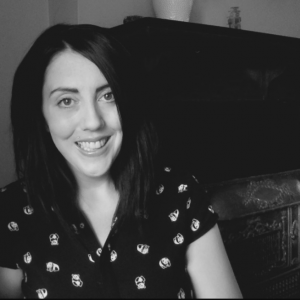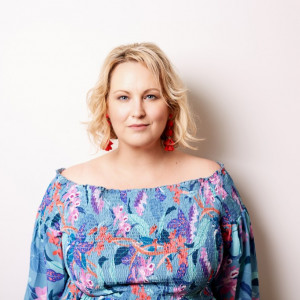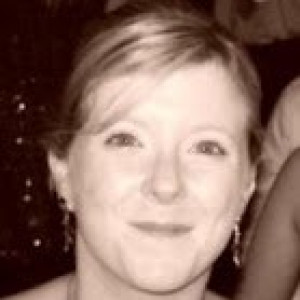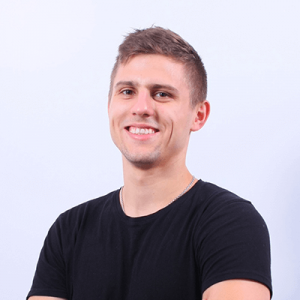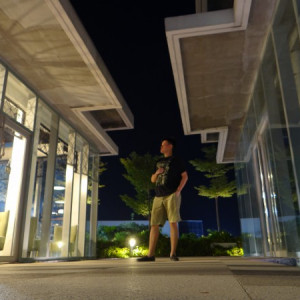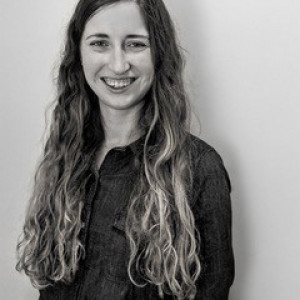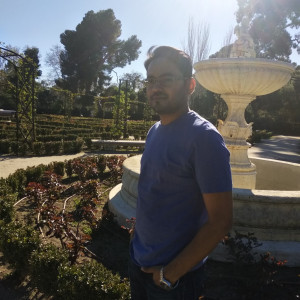What tools do you use to stay productive?
Interview with Grainne, a professional writer and content marketing manager who works remotely
I use Buckets.co every day for managing my tasks, brainstorming with other peeps, and collaborating on projects.
It's my main work hub, and I can't imagine organizing my work via any other medium now. I also use Slack on a daily basis to communicate with the team I'm working with.
Grainne's freelance work led to her landing a remote work job—see how she manages distractions and balances her work with Buckets.co and her clients.
Read full interview from Interview with Grainne, a professional writer and content marketing manager who works remotely.
Interview with Emma, a founder helping companies shape their remote work policies
Trello, Acuity scheduling, Dubsado workflows and making sure everything is synced between my desktop, laptop, and phone so if I am out and about I can find my schedule or documents at the touch of a fingertip.
Trello is like having a screen of electronic post-it notes, and it has weaned me off my addiction to the paper variety. In fact, I don't keep a paper to-do list anymore, which is surprising as I never thought I would break that habit.
My Trello board has six columns:
-
Column 1 is my "To Do" list of tasks for me where I put them in descending order from most urgent to least urgent and can drag them about if necessary to re-order them;
-
Column 2 is my "Done" list, I move my tasks as they are completed to this list during the day and delete them at the end of the day. It helps show me my progress as the day progresses.
-
Column 3 is my "Meetings" list for the week. Again they get moved to the "Done list" after they are completed.
-
Column 4 is a "To Do" list for my VA.
-
Column 5 is my VA's done list so I can see where she is up to; and
-
Column 6 is a column with random article ideas for content that I can add to when an idea strikes me. Because Trello is on my phone, I can add to the list anytime or anyplace.
I am relatively new to Dubsado, but at present, I am working on setting up workflow processes around leads and template emails, so I don't have to keep tabs on a matter as it progresses. I have also integrated Dubsado to my website, email, and my accounting system, which makes things easier also.
Emma carved out her own remote work niche—see how she manages her own virtual law firm while maintaining work/life balance.
Read full interview from Interview with Emma, a founder helping companies shape their remote work policies.
Interview with Rose, a co-founder growing the impact of remote work
My go-to tools are:
- Marinara Chrome Extension - Pomodoro Technique (I like to do 35 min on with 5 min break)
- Trello to track tasks, goals and layout workflows
- Journaling to help keep my head clear and work through decision making, and
- My headphones that allow me to listen to focus music.
I use different music for different types of tasks. I've also started using Workona Tab Management in the past few months. I love having various workspaces which makes it so easy to move from one project to the other.
Rose balances part-time SEO work with leading Grow Remote—see how she optimizes her time to build a community and resource for remote workers.
Read full interview from Interview with Rose, a co-founder growing the impact of remote work.
Interview with Andriy, a Wordpress developer & consultant
I'm a bit old-school in that sense, so I don't use many online apps or things like that.
I do use things like Slack for communication, but for productivity and planning, I use my whiteboard that's hanging on a wall in my room.
I love writing things out, planning work, and planning my day on a whiteboard.
I typically write 4-6 things that I want to accomplish every day on a whiteboard, and I use timeboxing for every task to make sure that the task doesn't take too long to accomplish.
Andriy has a simple approach to productivity—learn about his one essential remote work tool & his strategy for selecting clients.
Read full interview from Interview with Andriy, a Wordpress developer & consultant.
Interview with Wilbert, an ESL teacher that remotely teaches English to kids
Most of it is actually being provided by the client. The software, the logins as well as the materials, which would make it start working.
Though when you are teaching kids, those tools are not exactly enough. You need to add more personal touches, such as using 3rd party apps to add animations that you can use in your class as well as making visual aids or handheld puppets.
This helps to make the class more entertaining for your students as well as making it easier for you to manage them.
The other tools that I used for documentation purposes are Google Docs and Microsoft Excel. This is in order for me to track the lessons that I have handled on a daily basis.
Wilbert is an ESL (English as a Second Language) Teacher that made the jump to remote work to gain more freedom from his office job.
Read full interview from Interview with Wilbert, an ESL teacher that remotely teaches English to kids.
Interview with Erin, a videographer who found her freelancing niche
My favorite app that I use for productivity is Todoist. It’s a to-do list app that helps to schedule tasks.
It’s really helpful for me to keep motivated throughout the day because I can see my to-do list slowly shrink every time I finish something. One big trick I use is to break up big tasks into smaller parts. It helps me feel like I’m being productive even when something is just taking all day to finish.
For more general, long-term projects, I have a rule that if it’s not somewhere on my to-do list, it won’t really happen. For example, if I decide I want to reorganize my website, it doesn’t really mean anything until I put it in my Todoist.
I’ll put “make a plan for website” for tomorrow and then “start making changes to website” next week. This rule has REALLY helped me make those general, long-term projects more concrete so I can actually get them done!
Erin is a videographer who carved out a successful freelancing niche—see how she optimizes her time and plans for the ups and downs of freelance work.
Read full interview from Interview with Erin, a videographer who found her freelancing niche.
Interview with Hrishikesh, an entrepreneur helping to shape remote work
There are quite a few:
-
Figure it Out (FIO) gives me a quick visual representation of the different time zones, my teammates work in.
-
Take A Break is my favourite - reminds me to take regular breaks.
-
I use AirTable (sometimes Google Sheets) for tracking progress on regular action items, Slack for messaging, and Skype for video calls.
-
My work diary and pen are always handy for notes and tasks :)
Hrishikesh's platforms are helping to shape the world of remote work and the gig economy—see how he mobilizes his remote teams to facilitate this new future of work.
Read full interview from Interview with Hrishikesh, an entrepreneur helping to shape remote work.
Interview with Mary, a remote senior marketing content writer who maximizes downtime
I use SmartSheets to keep track of what I'm working on, as well as a good ol' Franklin Planner.
Yes, I'm old school! There's just something about writing things down that helps me stay on track.
With the help of a Franklin Covey Notebook & a few rounds of Candy Crush—Mary shows how important downtime is to remote work. See how she maximizes her time and puts work-life balance first.
Read full interview from Interview with Mary, a remote senior marketing content writer who maximizes downtime.
